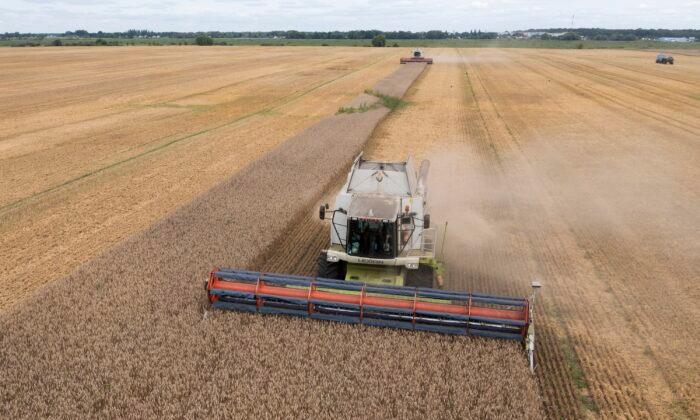Commentary
A glance at history reveals a strong correlation between food prices and civil unrest. Roman poet Juvenal once wrote, “Two things only the people anxiously desire—bread and circuses”—that is, food and entertainment. Roman emperors understood the political importance of food and would keep the people happy by giving them free grain handouts. But when food becomes scarce and a worker’s labor isn’t sufficient to procure sustenance, civil wars and revolutions often follow.
A fascinating chart
appearing on New Security Beat compares the occurrences of food riots with the food price index between the years 2004 and 2012. Not surprisingly, the higher the price, the higher the number of revolts.
This isn’t just a recent phenomenon, however, as the policies of the Roman emperors attest. We can also look back to the French Revolution for one of the most striking instances of this pattern. Between 1715 and 1800,
the population of Europe doubled. This population boom combined with the
deregulation of the domestic grain trade, which allowed sellers to increase prices if they wished, strained the food supply among the French people. The wave of riots known as the “Flour War” in 1775 offered a kind of preview of the chaos that was to break out in 1789. The
severe winter of 1788 exacerbated the problem, leading to famine and even starvation.
We know what happened next. Many other powerful influences led to the swearing of the Oath of the Tennis Court, the Storming of the Bastille, and all that followed, of course, but bread prices shouldn’t be ignored as a contributing factor that helped lay the groundwork for the cataclysmic political, philosophical, and religious changes that came to France.
Jump forward 75 years, and we find that a significant riot of the American Civil War, known as the
Richmond Bread Riot, began in part because of food prices. The harsh winter of 1863 was followed by warmer weather that turned roads into impassable tracts of mud, almost eliminating the transportation of food into the city. After a dissatisfactory meeting with the Virginian governor, John Letcher, the protesters began attacking government warehouses, grocery stores, and shops, seizing goods. The authorities used threats of violence and the presence of a cannon to restore order.
Or again, 50 years after that, we find similar pressures at work on the foundations of Russian society leading up to the Bolshevik Communist Revolution of 1917—comparable to the French Revolution in its destructive and world-altering results. Poorly led and equipped Russian armies
suffered many defeats at the hands of the Germans during World War I, which demoralized the people and the soldiers and disrupted the economy. Then, in the dark, frigid Russian January of 1917, transportation to cities such as Petrograd broke down, resulting in food and fuel shortages and subsequent riots. The professional revolutionaries within the Bolshevik party took advantage of the fear, hunger, and desperation of the people to help launch their overthrow of the Russian government and bring about the establishment of a communist state.
Food prices were also a problem for Germany during the Weimar Republic because of hyperinflation, which was largely a result of Germany’s defeat in World War I. Although Germany didn’t experience an uprising in the usual sense of the term, it’s fair to say that the rise of Adolph Hitler and the Nazi Party constituted a kind of revolution. Like the Bolsheviks in Russia, Hitler capitalized on the grievances of the German population to help gain power and acceptance of the need for radical change.
More recent examples of the correlation between rising prices and revolution can be seen in the Egyptian bread riots of 1977. The Egyptian government was pushing for a more liberal, free-trade economy. They sought loans from the International Monetary Fund (IMF) for this, and the
IMF was instrumental in getting the government to cut its food subsidies, increasing the price of bread by 50 percent and flour by 67 percent. Riots and conflicts with law enforcement broke out across the country, forcing the government to cancel the price increases.
The 2007 to 2008 food crisis
caused by weather and trade restrictions triggered food riots in many developing countries, including Haiti, Bangladesh, and Mozambique, while one of the catalysts of the Arab Spring was
the high cost of food. The list of these occurrences is almost endless. But the examples provided here are sufficient, I think, to demonstrate the pattern.
My point here isn’t to suggest that high food prices always lead to revolts or that they’re even the dominant cause of these upheavals. But certainly, a strong historical correlation exists. And smart revolutionaries know how to take advantage of real or imagined hardships (such as food insecurity) among the population in order to ignite revolutionary flames.
Views expressed in this article are opinions of the author and do not necessarily reflect the views of The Epoch Times.





